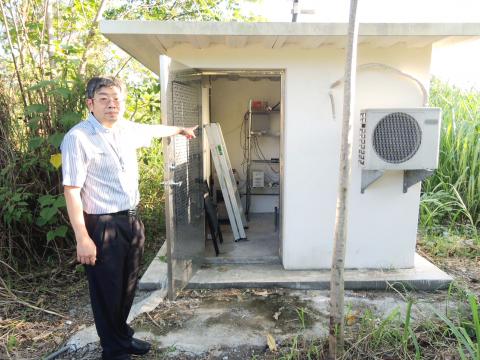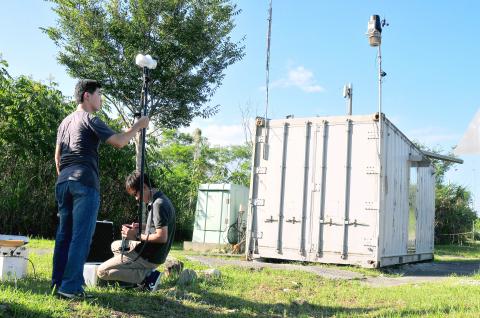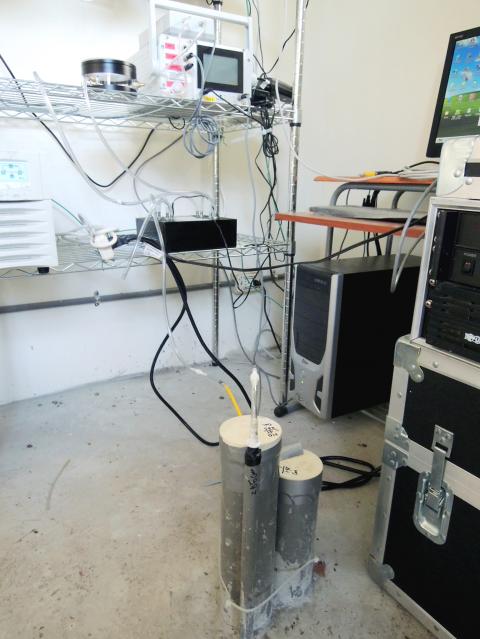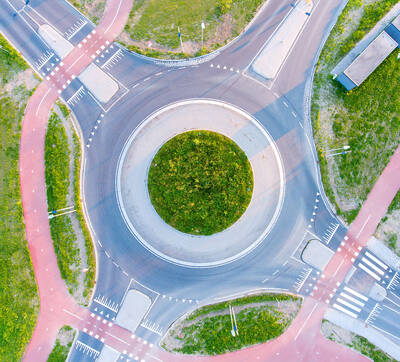Do earthquakes provide any identifiable precursors? Recent research into thermal infrared and gamma radiation conducted by Lee Lou-chuang, acting director of Academia Sinica’s Institute of Earth Sciences and Minister of the National Science Council (NSC), may offer new clues for predicting earthquakes.
The NSC, the Central Weather Bureau and the National Center for Research on Earthquake Engineering have teamed up in establishing the nation’s first Experimental Earthquake Prediction Observatory Park as part of the newly opened Eastern Taiwan Earthquake Research Center (E-TEC) at National Dong Hwa University. E-TEC convener Ma Kuo-fong says that he hopes earthquake prediction capabilities can be achieved as soon as possible in order to better meet disaster prevention needs.
Lee’s research found that prior to an earthquake, the formation of steam occurs, along with the release of radon and an increase in infrared rays, all of which are brought on by pressure from tectonic plates. On March 29 this year, Lee discovered that an unusual increase in infrared rays occurred in the ocean off the coast of Taitung, which was followed by an earthquake on March 31 with a magnitude of 6.2 on the Richter scale. Four earthquake detection stations are currently set up at National Chung Cheng University in Chiayi County, in Pingtung County’s Kenting area, on Yangming Mountain in Taipei and at Hualien’s Dong Hwa University.

Photo: Tang Chia-ling, Liberty Times
照片:自由時報記者湯佳玲
(Liberty Times, Translated by Kyle Jeffcoat)
地震發生是否有跡可循?國科會主委及中研院地科所所長李羅權最新研究熱紅外線與γ輻射偵測,可望為地震預測提供新線索。
國科會、氣象局、國家地震工程研究中心等共同在東華大學建置「台灣東部地震研究中心」,成立我國首座「地震前兆觀測實驗園區」。東部地震研究中心召集人馬國鳳表示,希望儘速達到地震預測目標,提供防災所需。

Photo: Hua Meng-ching, Liberty Times
照片:自由時報記者花孟璟
李羅權研究發現,地震前受到板塊擠壓,帶動水氣形成、氡氣釋出,紅外線會變多。今年三月二十九日發現台東外海熱紅外線量異常增加,三十一日就發生芮氏規模六點二地震。目前已在嘉義中正大學、屏東墾丁、台北陽明山與花蓮東華大學建置四個觀測點。
(自由時報記者湯佳玲)

Photo: Tang Chia-ling, Liberty Times
照片:自由時報記者湯佳玲

Have you ever seen a circular intersection where cars continuously flow in one direction around a central island? That is a “roundabout,” a well-known alternative to traditional intersections. Drivers enter and exit at different points without relying on traffic lights. Their primary purpose is to improve traffic flow and minimize the likelihood of high-speed collisions, particularly dangerous T-bone and head-on crashes. Roundabouts have existed and been implemented for over a century. In the 1960s, the modern roundabout emerged in the UK, with added rules for yielding. Unlike intersections with red lights, roundabouts allow vehicles to continue moving at a

If you’ve recently spotted adults parading around with cuddly toys dangling from their designer handbags, your eyes haven’t been deceiving you. The playful trend of adorning bags with cute charms has become popular among people of various ages. Plushies like Labubu and anime and manga characters such as Chiikawa have become must-have accessories that make personal statements. The practice of attaching charms to personal items has been common across cultures throughout history. In ancient civilizations, charms were often used as symbols of protection, good luck, or identity. Fast-forward to more modern times, and style icons like Jane Birkin, a

A: So you’re reading Jin Yong’s martial arts novel again? B: Yup, Jin’s novels are so fascinating, especially the trilogy: “Legends of the Condor Heroes,” “Return of the Condor Heroes,” and “Heaven Sword and Dragon Saber.” A: The late novelist published his first story in 1955, which means this year marks the 70th anniversary of his “wuxia” world. B: Wasn’t an English version of “Legends of the Condor Heroes” also released in 2018? A: Yes, but the debate over the translation of kung fu moves continues — like the evil move “Nine Yin Skeleton Claw.” A: 你又在重讀金庸的武俠小說啦? B:

A: Apart from Jin Yong, the late martial arts novelists Liang Yusheng and Gu Long were also very popular. B: Wasn’t Liang a pioneer of the “new school” wuxia genre in the 20th century? A: Yup, I really like his Tianshan mountain series. All the characters — such as the “White Haired Demoness” — are so vivid. B: The roles in Gu’s books are lively, too — like the “Fragrant Commander” Chu Liuxiang. A: And the TV drama adapted from the Chu Liuxiang series swept across Taiwan in the 1980s, with ratings surging over 70 percent at that time.